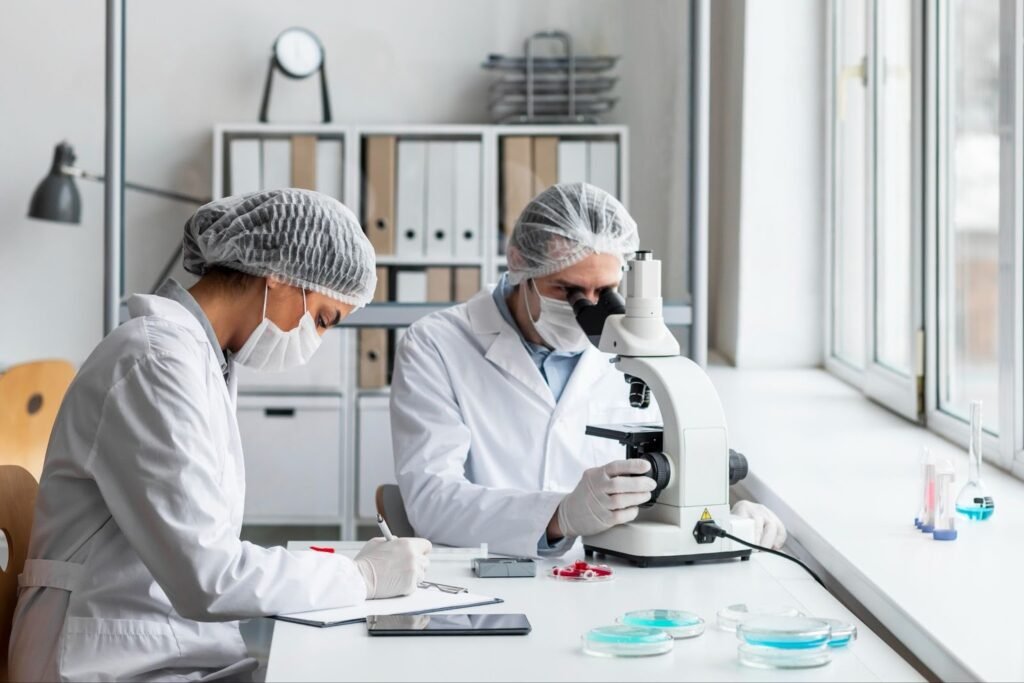Science
Transforming Laboratory Spaces with Intelligent Design Solutions

Laboratories are critical hubs for research, development, and quality control. Yet, many still resemble outdated facilities from the 20th century, characterized by fixed benches and cluttered shelving. Optimizing laboratory environments requires a comprehensive understanding of the relationship between space, equipment, and personnel. By implementing intelligent design solutions, laboratories can become safer, more efficient, and collaborative workplaces.
Rethinking Laboratory Design for Flexibility
Traditional laboratory designs often consist of permanent fixtures that limit adaptability. As modern research increasingly demands multidisciplinary approaches, flexibility becomes essential. Contemporary furniture solutions, such as adjustable benches and mobile storage units, enable scientists to redefine their work environments.
Grouping similar tasks together can help mitigate cross-contamination risks during sample preparation, analysis, and documentation. Adjustable-height work benches paired with anti-fatigue mats not only enhance comfort but also minimize the risk of workplace injuries. Clear visual signage and floor graphics offer guidance in high-traffic areas, improving safety and operational efficiency.
By viewing laboratories as dynamic workspaces, managers can create systems that align with the evolving demands of research rather than hindering progress.
Enhancing Productivity Through Environmental Control
Often overlooked, environmental factors such as air quality, lighting, and sound significantly impact productivity. Effective laboratory design incorporates solutions that address these elements. Proper ventilation and airflow, task-specific lighting, and natural light are critical to creating a conducive working environment.
Noise control is another vital component; managing sound levels can enhance focus and reduce distractions. By maintaining these “invisible partners,” laboratories can improve both human performance and equipment reliability.
Streamlining Storage for Efficiency
Inefficient storage solutions can hamper productivity and compromise sample integrity. Smart laboratory design integrates ergonomic principles, digital tracking, and future-proofing strategies.
Utilizing vertical and mobile storage units, alongside specialized patient sample management systems, reduces clutter. RFID or barcoding systems streamline inventory management, ensuring that materials are easily accessible when needed. With optimized storage solutions, scientists can devote more time to their experiments rather than searching for necessary equipment.
Integrating Safety into Daily Operations
Safety remains a top priority in laboratory environments, with research indicating it as one of the highest risks across 50 countries. Incorporating safety measures directly into workflows can enhance compliance and reduce incidents.
Positioning safety supplies, such as eyewash stations and spill kits, in easily accessible locations is crucial. Implementing physical barriers to separate hazardous and non-hazardous areas minimizes the risk of cross-contamination. Automatic shutoff mechanisms and interlocks on instruments further reduce the likelihood of accidents.
Digital safety reminders, such as in-lab sensors that encourage the use of personal protective equipment (PPE), can also play a vital role in maintaining a safe working environment.
Embracing Unobtrusive Technology
The best laboratory design solutions often operate seamlessly in the background. Integrated data and power channels, featuring concealed cabling, reduce clutter and enhance safety.
Intelligent sensors and Internet of Things (IoT) technology continuously monitor critical factors such as temperature, humidity, and energy consumption. These systems alert staff to potential issues before they escalate, ensuring smooth operations.
Cloud-based scheduling tools for shared equipment enhance resource utilization and minimize conflicts, allowing laboratories to operate efficiently. Energy-efficient appliances, such as low-vibration freezers and centrifuges, contribute to cost savings and reduce environmental impact without sacrificing performance.
Fostering Collaboration in Organized Spaces
Modern scientific research thrives on collaboration, necessitating well-organized workspaces. Designating specific areas for collaboration—such as meeting rooms or glass-enclosed discussion spaces—enables productive conversations without disrupting ongoing lab work.
Collective electronic charts, featuring interactive screens or web-based boards, allow teams to share project updates and stay aligned. Soundproofing strategies can mitigate noise disturbances, ensuring that collaborative efforts do not interfere with individual tasks. Flexible scheduling practices help to minimize bottlenecks, facilitating a more harmonious working environment.
Conclusion: Redefining Laboratory Spaces for the Future
Optimizing laboratory environments with intelligent design solutions extends beyond aesthetics; it is about creating spaces that foster research collaboration and enhance safety. By rebuilding labs as dynamic, productive areas that prioritize air quality, lighting, noise control, smart storage, and integrated safety measures, organizations can unlock new levels of innovation and productivity. The successful implementation of these strategies not only benefits scientists but also advances the overall mission of high-quality research.
Alexia Hope, author at Research Snipers, emphasizes the importance of these developments in enhancing laboratory functionality and efficiency.
-

 Science2 months ago
Science2 months agoUniversity of Hawaiʻi Joins $25.6M AI Project to Monitor Disasters
-

 Business2 months ago
Business2 months agoForeign Inflows into Japan Stocks Surge to ¥1.34 Trillion
-

 Top Stories2 months ago
Top Stories2 months agoBOYNEXTDOOR’s Jaehyun Faces Backlash Amid BTS-TWICE Controversy
-

 World2 months ago
World2 months agoBoeing’s Merger with McDonnell Douglas: A Strategic Move Explained
-

 Top Stories2 months ago
Top Stories2 months agoCarson Wentz Out for Season After Shoulder Surgery: Urgent Update
-

 Entertainment2 months ago
Entertainment2 months agoSydney Sweeney Embraces Body Positivity Amid Hollywood Challenges
-

 Top Stories2 months ago
Top Stories2 months agoMarc Buoniconti’s Legacy: 40 Years Later, Lives Transformed
-

 Lifestyle2 months ago
Lifestyle2 months agoKelsea Ballerini Launches ‘Burn the Baggage’ Candle with Ranger Station
-

 Health2 months ago
Health2 months agoInnovative Surgery Restores Confidence for Breast Cancer Patients
-

 Sports2 months ago
Sports2 months agoSteve Kerr Supports Jonathan Kuminga After Ejection in Preseason Game
-

 Entertainment2 months ago
Entertainment2 months agoZoe Saldana Advocates for James Cameron’s Avatar Documentary
-

 Science2 months ago
Science2 months agoChicago’s Viral ‘Rat Hole’ Likely Created by Squirrel, Study Reveals









